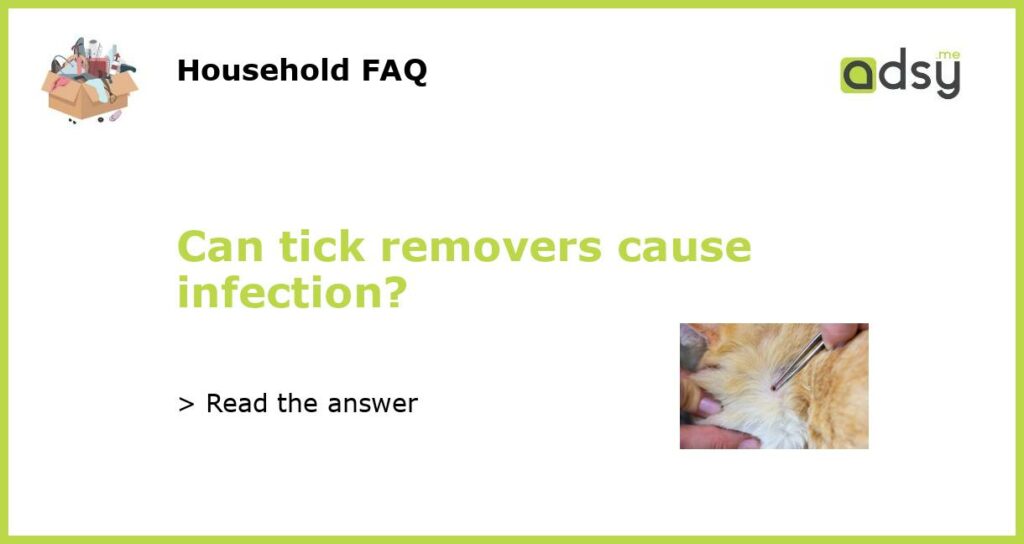Can Tick Removers Cause Infection?
Ticks are a common problem for outdoor enthusiasts, pet owners, and anyone who lives in an area with a high tick population. These blood-sucking parasites can transmit diseases such as Lyme disease, babesiosis, and anaplasmosis, making it important to remove ticks as soon as possible. There are various tick removal tools available on the market, but can these tick removers cause infection?
The Risk of Infection
When removing ticks, the main concern is to avoid leaving any parts of the tick’s body behind, as this can lead to infection. While tick removers like tweezers, tick hooks, and tick cards are designed to make tick removal easier, there is still a risk of infection if not used properly.
When using a tick remover, it is important to follow the instructions carefully to minimize the risk of leaving any parts of the tick attached to the skin. It is also important to clean the area thoroughly after tick removal to reduce the risk of infection. If you notice any signs of infection, such as redness, swelling, or pus around the bite site, it is important to seek medical attention.
Choosing the Right Tick Remover
Not all tick removers are created equal, and choosing the right one can help minimize the risk of infection. One popular type of tick remover is the tick hook or tick twister, which is designed to safely and effectively remove ticks without leaving any parts behind. These tools are typically made of plastic or metal and have a hook-shaped design that allows for easy removal.
Tick cards, on the other hand, are small plastic cards with a notch or slot that is used to slide under the tick and lift it off the skin. While tick cards can be effective, they may not be as precise as tick hooks and may not work well for larger ticks or ticks that are deeply embedded.
Tips for Safe Tick Removal
Regardless of the type of tick remover you choose, there are some general tips to keep in mind for safe tick removal:
- Wear gloves to avoid direct contact with the tick and to prevent any potential pathogens from entering any cuts or abrasions you may have.
- Grasp the tick as close to the skin as possible with the tick remover and apply gentle, steady pressure to lift the tick straight out without twisting or jerking.
- Do not crush or squeeze the tick, as this can increase the risk of infection.
- After tick removal, clean the bite area with antiseptic or soap and water to reduce the risk of infection.
- Monitor the bite site for any signs of infection and seek medical attention if necessary.
Tick removers can be an effective tool for safely and efficiently removing ticks, but it is important to use them properly to minimize the risk of infection. Following the instructions provided with the tick removal tool and taking proper precautions during the removal process can help reduce the risk of leaving any parts of the tick behind and decrease the chance of infection. If you experience any signs of infection after tick removal, it is important to seek medical attention to prevent further complications.






